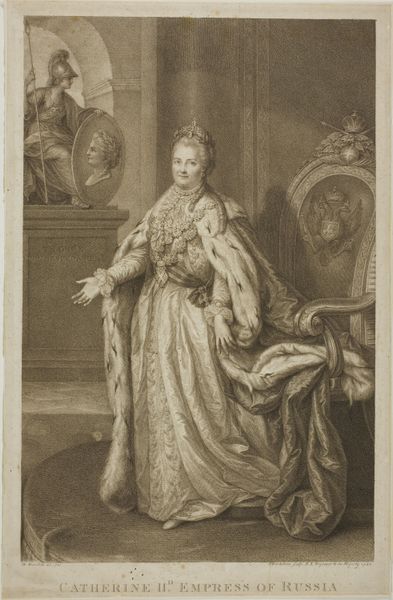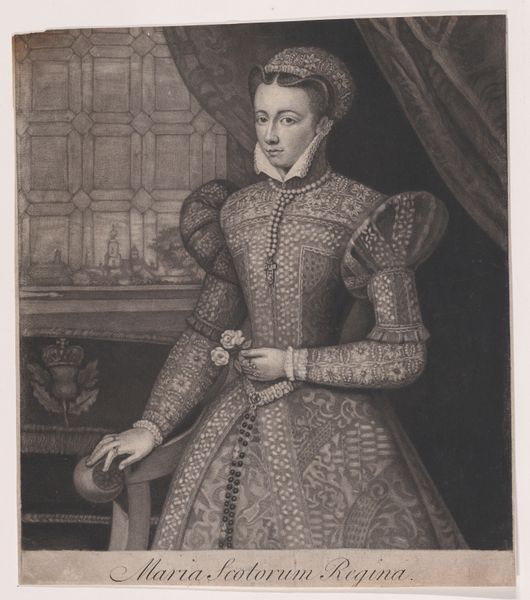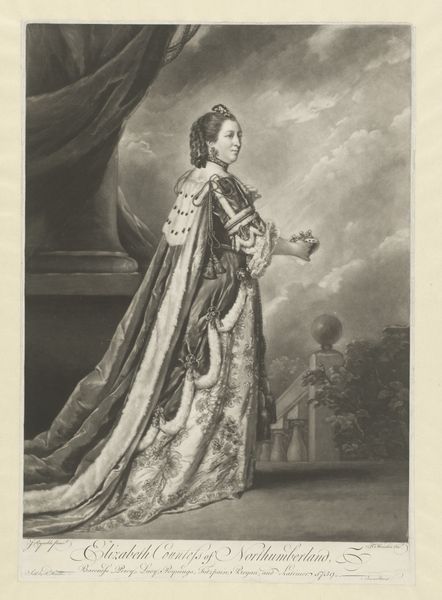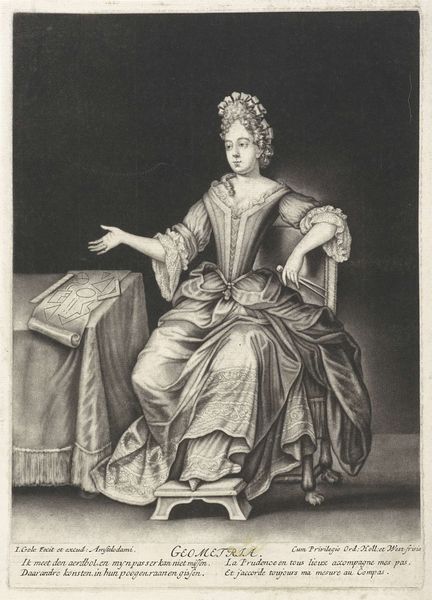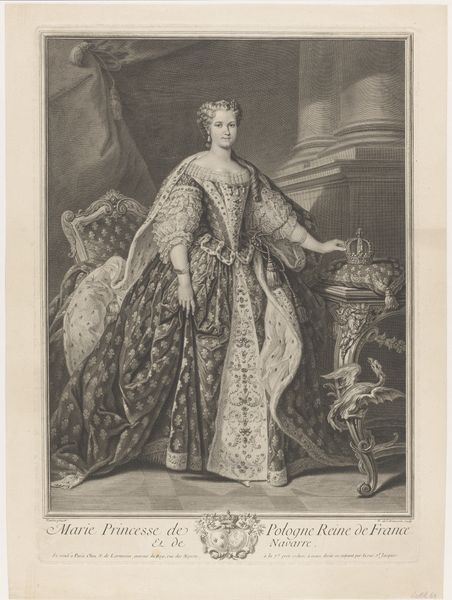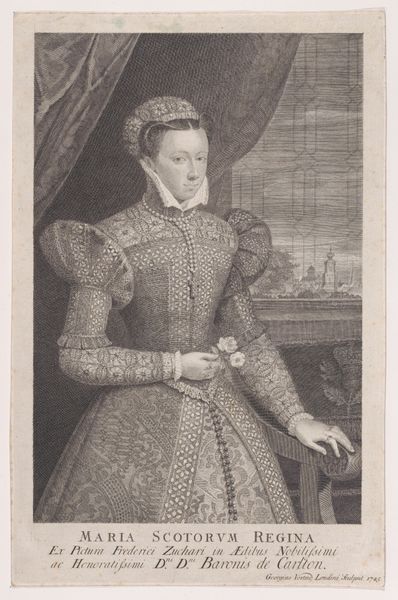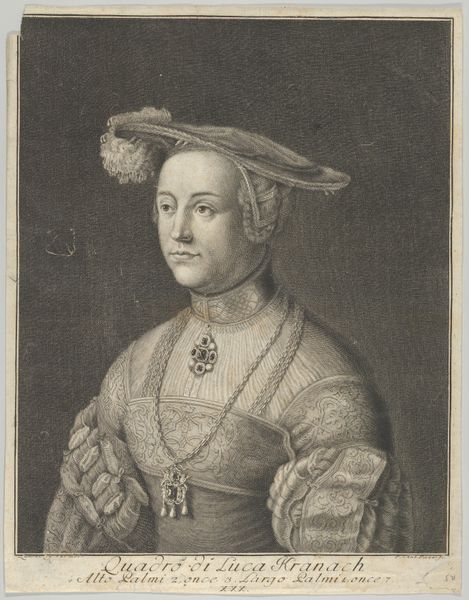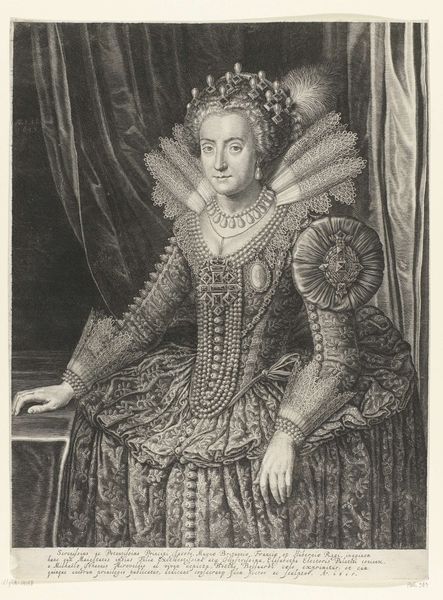
Portrait of Joanna of Austria, Grand Duchess of Tuscany 1702 - 1712
0:00
0:00
drawing, print, engraving
#
portrait
#
drawing
#
baroque
# print
#
engraving
Dimensions: Plate: 19 13/16 × 11 7/16 in. (50.4 × 29 cm) Sheet: 21 5/8 × 14 7/8 in. (55 × 37.8 cm)
Copyright: Public Domain
Editor: Here we have a work by Gérard Edelinck, "Portrait of Joanna of Austria, Grand Duchess of Tuscany", dating from 1702 to 1712. It’s a drawing, specifically an engraving, held at the Met. It strikes me as a very formal, almost stately, image. There's a lot of intricate detail in her clothing. What do you see in this piece, looking at it from a curatorial perspective? Curator: It’s like stepping back in time, isn’t it? Edelinck has captured more than just a likeness; he’s presenting Joanna as a symbol of power and grace, all within the rigid conventions of Baroque portraiture. Look how the texture of her gown is meticulously rendered. But consider – what is the impact of choosing printmaking, specifically engraving, as the medium to capture this grand image? Does it democratize the image somewhat, making it accessible to a broader audience than a painted portrait? Editor: That's a great point! It makes it reproducible, not just a one-off thing. Do you think the clothing signifies something beyond status? Curator: Absolutely. The layers, the jewels, the stiff silhouette… it's all armor! Court life was a battleground. This image isn't just about surface, it's broadcasting a narrative of dynasty, influence, and perhaps a hint of personal vulnerability carefully concealed. The choice of attire can reflect one's position and family identity within court life. Joanna’s position requires to exude control in such an environment. Editor: That makes total sense. It’s like she's wearing her responsibilities. It's like this portrait shows her agency or maybe how it's limited by her rank. Curator: Precisely! Art of this era is seldom straightforward, it whispers just as much as it shouts. Reflecting on this has made me think about the challenges artists face when balancing individual expression with the demands of representing powerful figures. Editor: I hadn't considered that aspect before! Now, when I look at this portrait, I see a story that's way deeper than I originally thought! Thanks for your thoughts.
Comments
No comments
Be the first to comment and join the conversation on the ultimate creative platform.

